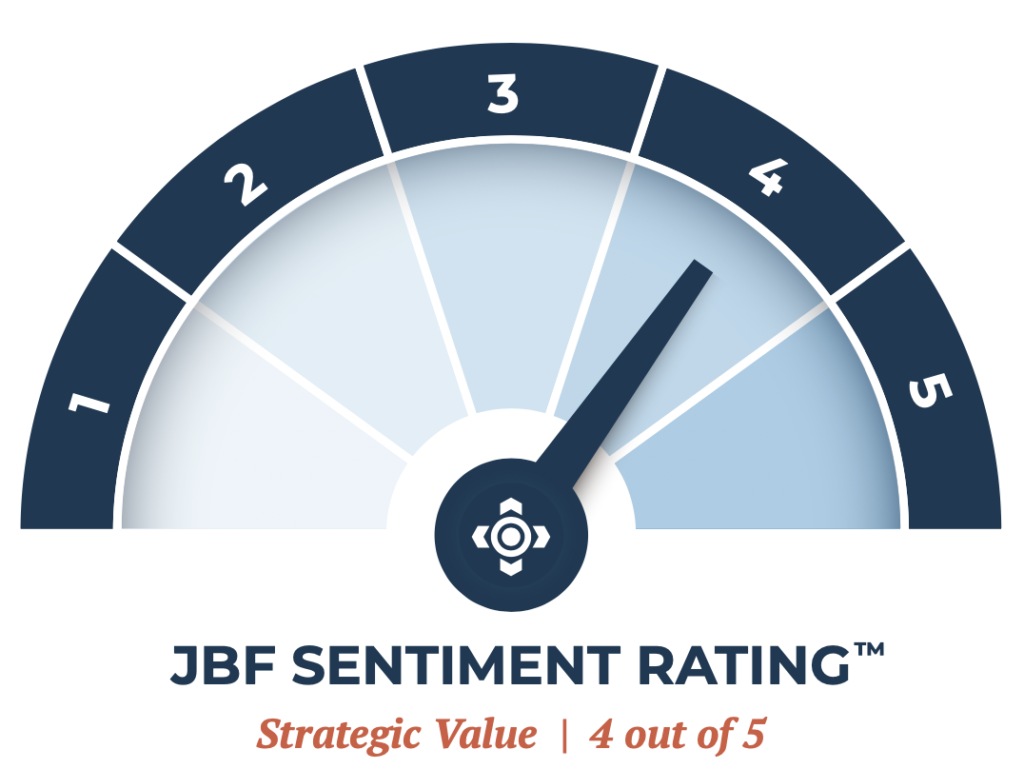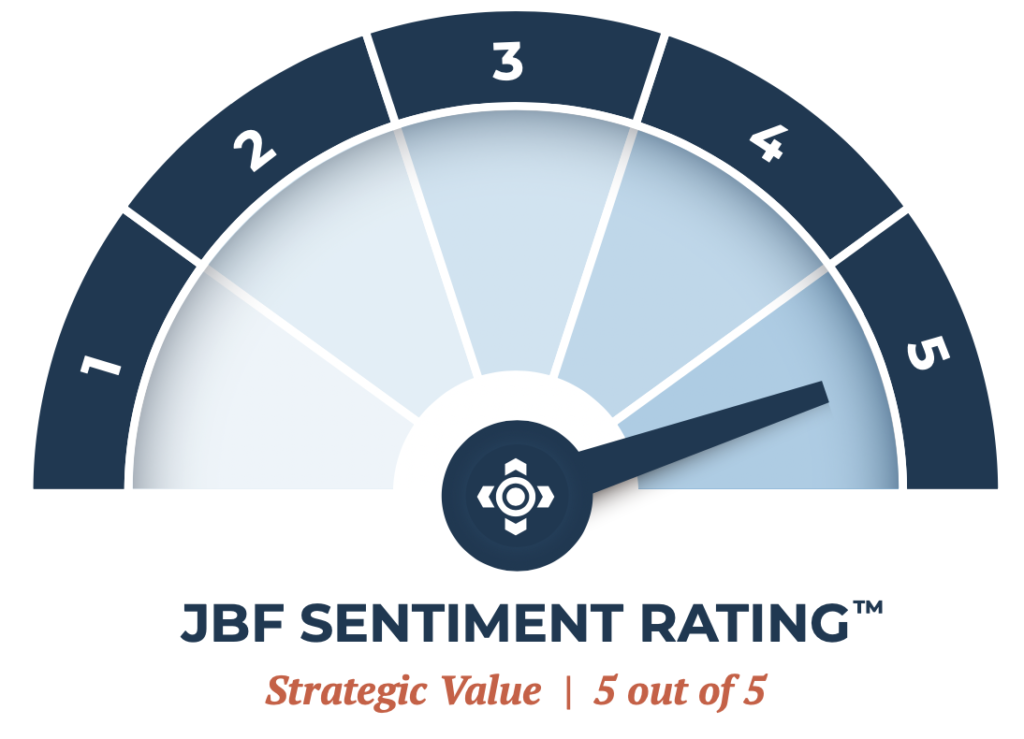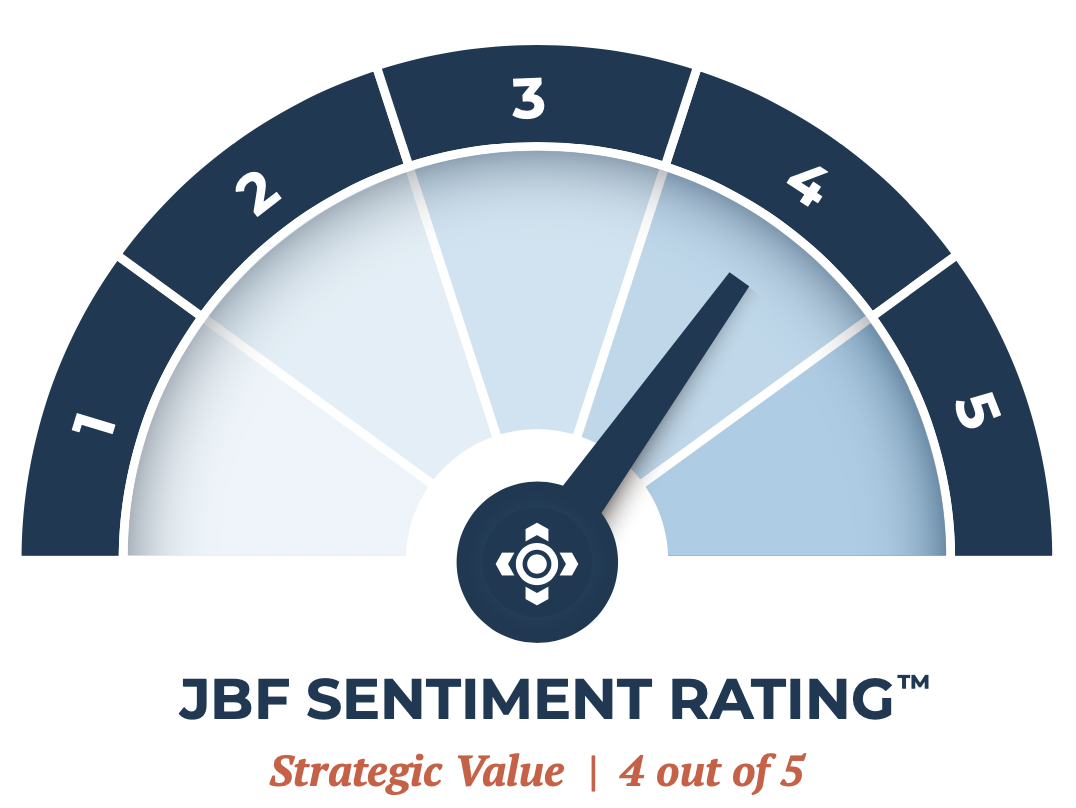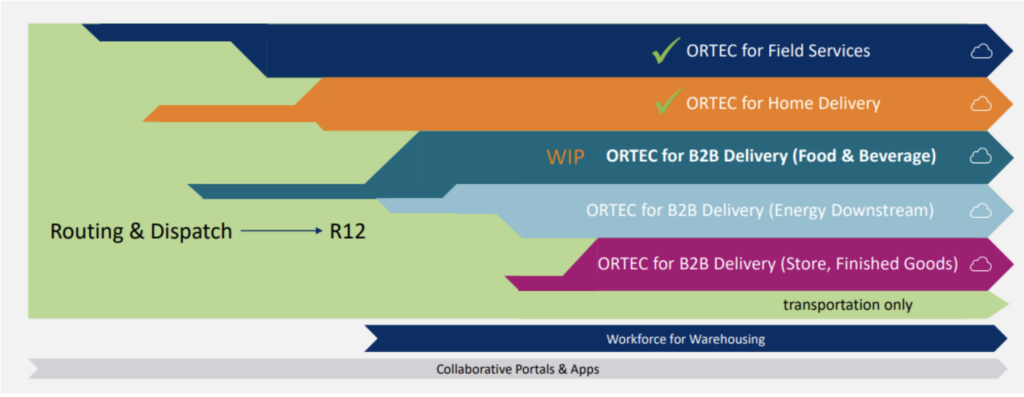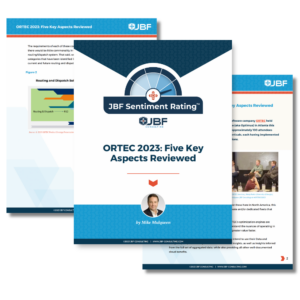Introduction
Routing and Load Building software company ORTEC held their annual user’s conference (aka Optimus) in Atlanta this year. The conference hosted approximately 100 attendees across a variety of industry verticals, each having implemented one or more of ORTEC’s solutions.
The audience was highly engaged as they were led through client case studies and ORTEC-led presentations. During these sessions, a few fundamental messages caught my attention.
- ORTEC is focusing on the North American market. For those here in N. America, this is great news, especially for shippers that rely on private and/or dedicated fleets that operate in the secondary network.
- ORTEC is developing industry-specific solutions. ORTEC’s optimization engines are highly configurable, but custom solutions that understand the nuances of operating in different types of businesses will, in theory, provide greater value faster.
- ORTEC is “all in” on their cloud-native solution. They intend to use their Data and Analytics (DnA) solution to provide individual client insights, as well as insights inferred from the full set of aggregated data, while also providing all other well-documented cloud benefits.
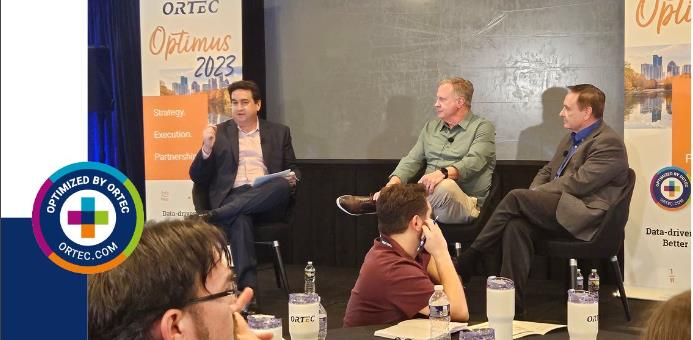
Functionality Deep Dive
While at the conference, I had a chance to meet with Patrick Hennen (Chief Technology Officer) and Marijn Deurloo (Chief Product Officer) to discuss key initiatives and the company’s long-term vision. As part of the discussion, we touched on several interesting capabilities that ORTEC is bringing to market.
Following are 5 areas that we thought were especially worth delving into.
Area 1 – Order Prediction
A flaw of today’s transportation technology is that batch optimization assumes that the entire universe of work is known at the time of optimization. While this is the case in a subset of industries that have strict order cut-offs (e.g. food service), most organizations do not operate this way. New orders flow in after optimization and will degrade the initial solution.
ORTEC understands this problem and has built out predictive capabilities that anticipate future orders based on history, which are then used to refine the solution.
We have long been advocates for building probabilities into routing heuristics, especially in networks that rely on both fleet and contract carriers. For instance, calculating the probability of a backhaul in a certain region will be highly useful in determining which route to allocate a fleet resource vs. a one-way, for-hire resource.
Predictive orders are a much-needed move away from traditional, deterministic planning.
As a future extension, we’d like to see orders forecasted not simply based on history but through customizable inputs that would increase the accuracy of the order forecasts. Some shippers may be highly dependent on weather conditions, while others may have robust S&OP processes that would help generate these predictions.
"Predictive orders are a much-needed move away from traditional, deterministic planning."
Area 2 – Master Routing Decay Quantification
In some industries, companies can dictate delivery or service days to their customers instead of responding to ad hoc customer orders. In these industries, “Master Routes” are created at some set cadence (often annually) and become the basis for daily route planning. The objective of master routing is to minimize costs by creating geographically clustered routes that balance work across drivers and driver days.
However, the efficacy of an organization’s Master Routes decays as new customers are onboarded and others churn out. Other factors, including variable order quantities, change due to seasonality or increasing/decreasing market share. Regardless of why Master Routes decay, an oft-posed question is “When should I perform a re-route?”
ORTEC has developed an innovative solution that addresses this question. After a re-route is performed, the ORTEC Tactical Routing solution (OTR) continually assesses daily solution quality against the original re-route metrics. It then quantifies the delta between the current-state routes and a proposed set of new master routes. By quantifying the lost opportunities, organizations gain a clear insight into how well their master routes are holding up.
This continuous feedback loop is an advantageous feature that enables fleet operators to quantify the value of a re-route versus the standard approach that uses either the calendar or driver complaints as the impetus for a re-route.
Area 3 – Multi-faceted Optimization
Solvers used in transportation planning typically employ cost minimization as their “objective function.” These solvers use advanced heuristics coupled with user-specific, configurable parameters that constrain the solution, such as vehicle capacity, time windows, and route duration.
These parameters are utilized to ensure the operational feasibility of the solution. However, the primary purpose of these heuristics is to minimize costs subject to user-specific constraints.
ORTEC has extended the legacy approach and moved from a purely financial objective function to a multi-faceted solution approach that, in theory, will yield better overall results.
ORTEC has defined 3 additional optimization areas that can now be considered during planning. Shippers can define how factors such as environmental impact, employee happiness, and customer satisfaction are quantified and weighted during the solve.
An example of how this can be utilized was presented during the product roadmap overview. An initial implementation of ORTEC’s routing solution led to a significant increase in the number of stops/route; this made management quite happy until 10 drivers quit. While the optimization worked well, the cost and impact of the subsequent driver attrition ate away the savings, negatively impacted driver satisfaction, and led to a decrease in customer satisfaction.
We believe that the ability to develop routing solutions that are cognizant of emissions, as well as customer and employee satisfaction, is a significant advancement over the somewhat myopic way solvers have historically worked. However, we are concerned that tuning the heuristics and understanding “WHY” the solver is doing what it is doing may become more difficult.
In the past, we have had some difficulty troubleshooting and tuning the sophisticated configuration parameters that ORTEC uses. We fear adding additional logic may make troubleshooting more difficult.
"ORTEC’s optimization engines are highly configurable, but custom solutions that understand the nuances of operating in different types of businesses will, in theory, provide greater value faster."
Area 4 – Industry-Specific Cloud Solutions
When speaking with routing and dispatching software providers, JBF typically asks what type of fleets their solutions are designed to support. We become skeptical when providers, especially those without track records, say they can handle any type of transportation fleet. We don’t believe they are lying. We believe they are ignorant of the significant differences in requirements across industries that operate fleets.
For instance, a courier may be routing sprinter vans with 70 stops while a grocer may average 2 stops /route on a tractor-trailer. Some longer-haul fleets may have multi-day routes and consequently look to optimize internal backhauls or sell capacity on the open market to generate revenue.
However, field service fleets may look at the problem differently and seek to maximize revenue per employee while also adhering to vehicle inventory, driver skillset constraints, and geographic proximity when assigning work to a driver/technician. Again, these are fundamentally different problems that require purpose-built solutions.
To address this need, ORTEC has undertaken the process of building specific routing and dispatch solutions to address 5 specific industries (see chart below) and the unique requirements each has. We anticipate that these solutions will enable faster implementations with quicker time to value for ORTEC’s customers, given the out of the box solution may be much closer to “go-live” ready than a generic solution that requires significant tuning.
While we think industry-specific solutions are the best approach, even more focused solutions will likely be required in the future. For instance, the Food and Beverage solution likely includes manufacturers like Tyson Foods, food service companies like Sysco Foods, and grocers like Kroger.
The requirements of each of these companies are vastly different from one another, so there would be little commonality in terms of what each business would require from their routing/dispatch system. That said, we know that ORTEC has to start somewhere, and the 5 categories that have been identified likely represent a logical breakdown of ORTEC’s current and future routing and dispatch customers.
Routing and Dispatch Solutions to Address 5 Specific Industries
Area 5 – Cloud and the AI Implications
ORTEC has long been known in the logistics software space as the “math” guys. Over the past 4 decades, they have differentiated themselves and stayed relevant by building sophisticated mathematical heuristics and models embedded within their software. This approach has driven customer value in both transportation and distribution to hundreds of customers.
While we find ORTEC both highly competent and humble (a rare combination for tech companies), we have been critical of their legacy, on-premise technology that was not cloud ready. In this conference, ORTEC put that concern to rest. They are now a cloud software company with all the benefits to customers that that implies (e.g. automatic upgrades, enhanced security and system maintenance, and performance tuning).
It also addresses an impediment to sales, given many ORTEC prospects have made the transition to SaaS as their preferred deployment model. Essentially, ORTEC had to move to the cloud or face an existential threat to their business.
However, a cloud solution provides additional opportunities for ORTEC to collect, analyze, and communicate both predictive and prescriptive information to shippers whose data had historically been hidden from ORTEC.
ORTEC’s new cloud data repository, called DnA, will now house these data, which provides some intriguing possibilities. While I was hesitant to bring up artificial intelligence in this analysis given the excessive hype we have seen since the release of ChatGPT, I do see ORTEC being one of the few mid-size technology companies that is positioned, from an internal skill-set perspective, to embrace these technologies.
By leveraging both customer-specific data and aggregated data across customers, ORTEC can provide basic benchmarking and other analytics but also provide AI-driven prescriptive recommendations as the solution identifies behaviors, trends, and other activities that imply lost efficiencies and/or potential opportunities.
ORTEC is in the early stages of their AI journey, but I appreciate that they are focusing not simply on the technology for the sake of the technology. Instead, they are focused on how the technology will help their customers. Their initial foray into predicting travel and stop durations is somewhat mundane and aligned with virtually every other TMS/R&S vendor we speak with; however, their vision to embed artificial intelligence and machine learning into their solution and workflows is what we liked seeing.
“We believe that the ability to develop routing solutions that are cognizant of emissions, as well as customer and employee satisfaction, is a significant advancement over the somewhat myopic way solvers have historically worked.”
Summary
At this year’s Optimus conference, ORTEC laid out a compelling vision that addressed our biggest concerns (i.e. technology and their migration to the cloud) while providing a compelling vision and product roadmap. Their project plans seem aggressive but achievable, and given the majority of JBF Consulting’s clients are in North America, we especially appreciated the company’s focus on North America as the key market for the business.
We look forward to seeing how the company progresses toward their ambitious plans and hope that some of the innovations discussed by ORTEC become commonplace across all logistics technology providers.
JBF Investor Advisory Services
JBF Investor Advisory Services provides due diligence guidance to private equity and VC firms. We bring decades of log-tech software expertise that has been honed by working closely with our shipper clients to evaluate and implement log-tech solutions.
JBF investment guidance Log-Tech focus areas:
- Transportation Management Fleet Management
- Yard Management
- Parcel Management Routing and Scheduling
- Logistics Modeling
- Digital Freight Brokerages Visibility / Analytics Transportation / 3PL Managed Services
About the Author
Mike Mulqueen is the Executive Principal of Strategy & Innovation at JBF Consulting. Mike is a leading expert in logistics solutions with over 30 years managing, designing and implementing freight transport technology. His functional expertise is in Multi-modal Transportation Management, Supply Chain Visibility, and Transportation Modeling. Mike earned his master’s degree in engineering and logistics from MIT and BS in business and marketing from University of Maryland.
